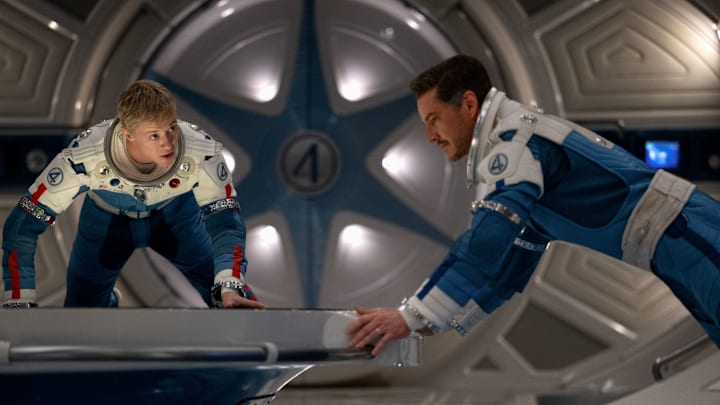It can feel weird to say it, but Star Trek is a period piece. The period just happens to be the future. The question, of course, is how to depict the future when tomorrow always comes. The choice taken for Star Trek since J. J. Abrams’ 2009 film has been simply to change the look of the future to seem more futuristic by today’s standards, but there is another way.
The 2025 Marvel film, The Fantastic Four: First Steps, is set in a vaguely 1960s world and incorporates futuristic technology that stays in keeping with the overall aesthetics and setting of the ’60s. It’s amazing! This film shows how the production design isn’t really what makes a movie or TV show look old.
A common claim is that the production design of Star Trek: The Original Series is campy, hokey, and dated. Given a recent episode, this is almost certainly the attitude held by the producers of Star Trek: Strange New Worlds. If that is the case, then, why even make a show set in the TOS era?
The Fantastic Four: First Steps demonstrates that audiences are not hung up on the fact that technology looks old. (I’m 30 and collect typewriters. Many people even younger than me collect vinyl records. Anecdotal evidence suggests that retro tech is popular.) Instead, the crucial issue, I would say, is more fundamental cinematic techniques.
As beautiful as I may consider the cinematography of the original Star Trek to be, I recognize that it is far moodier and more expressionistic than the naturalism that has become standard in television and film since the 1970s.
The reasons Star Trek looks like that are varied. Some of it is about making the show look good and readable on both color and black & white television sets at a time when color TV was a novelty. Some of it is about the cinematic language of the time, where techniques like soft focus and low-key lighting were used regularly for dramatic effect. All of it can feel decidedly “old” to modern eyes.
Aside from a few clips from an in-universe television show, however, The Fantastic Four: First Steps is shot like any other blockbuster from the 2020s. Naturalistic lighting and razor-sharp lenses make the movie look modern, even while the sets and props in the film look like a mix between 1960s Tomorrowland at Disneyland and, well, Star Trek.
As I said at the start, Star Trek is a period piece. It may be the mid-23rd Century, but it’s still a period. Yes, that period is fictional, but to maintain the integrity of the overall fictional world of Star Trek, we need to accept that the mid-23rd Century in that timeline will look the way it does in the original Star Trek. (If we were in the Babylon 5 universe, the same time period would look different.)
Almost all adaptations of Sherlock Holmes stories are set in the late Victorian era. The sets and costumes are fairly similar throughout more than a century of Holmes films. Nonetheless, a film from 1922 looks different from 1943, which looks different from 2009, and so on. The cinematography and editing styles change, but the setting doesn’t.
Why can’t Star Trek do the same? It actually did 20 years ago in Enterprise’s “In a Mirror, Darkly, Part II.” Some may argue that a one-off episode is more sustainable than a whole series, but is it? First Steps is a fantastic movie. Mad Men lasted for seven seasons with a ’60s aesthetic. I don’t think the sets affect sustainability that much.
Set design, props, and costuming are important to the overall narrative and world building of Star Trek. They are a baseline. Techniques of editing and cinematography are the storytelling tools that can make a thing look “new.”
At the end of the day, it is about helping the audience build a suspension of disbelief so that the story can wash over them. Personally, I find it much harder to believe that Pike’s Enterprise in SNW is the same ship as Kirk’s in TOS than I do believe that Kirk’s Enterprise is a starship.
